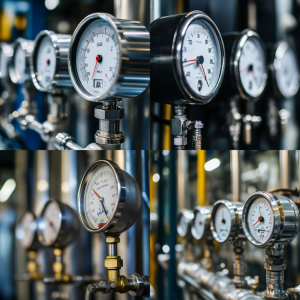
Pressure vessel operating conditions represent the specific parameters defining safe and efficient vessel operation. These conditions establish boundaries for maintaining structural integrity and safety while maximizing operational efficiency and equipment lifespan across diverse industrial applications.
Pressure vessel operating conditions encompass three critical parameters: pressure, temperature, and volume. These factors interact significantly, following fundamental gas laws like Boyle’s Law and Charles’s Law. For example, increasing temperature typically raises pressure in closed systems, while volume changes affect both temperature and pressure dynamics throughout the operational cycle.
Industry standards provide essential frameworks for determining appropriate pressure vessel operating conditions. ASME certified pressure vessels must comply with ASME Boiler and Pressure Vessel Code (BPVC), API, OSHA standards, and ISO standards that establish minimum requirements for design, fabrication, and operation, ensuring consistent safety approaches across industries and geographic regions.
Pressure, measured in PSI, is the most fundamental aspect of pressure vessel operating conditions. It represents force exerted by contained fluid against vessel walls during normal and extreme operating scenarios. Accurate pressure measurement and control are essential since excessive pressure causes most vessel failures, leading to potential catastrophic consequences.
Maximum Allowable Working Pressure (MAWP) indicates the highest pressure for safe operation under normal pressure vessel operating conditions. MAWP determination involves material strength properties, vessel dimensions, joint efficiency, and corrosion allowances using ASME BPVC Section VIII formulas with appropriate safety factors.
Design pressure differs from MAWP by including additional safety factors and operational considerations:
Pressure vessel fabrication requires pressure testing to verify vessel integrity through hydrostatic testing at 1.3 to 1.5 times design pressure, following National Institute of Standards and Technology (NIST) guidelines for material testing and verification procedures.
Temperature significantly impacts pressure vessel operating conditions through material property effects and thermal stress considerations. Rising temperatures reduce material strength and increase deformation susceptibility, while low temperatures can cause embrittlement and reduced fracture toughness in certain materials.
Temperature limits must align with construction materials and operational requirements:
Thermal expansion creates critical considerations for pressure vessel operating conditions. Different materials expand at varying rates, potentially causing thermal stress at dissimilar material joints and connections. Engineers address this through expansion joints or bellows, following thermal expansion principles outlined by the National Institute of Standards and Technology.
For specialized applications like cryogenic vessels, temperature monitoring systems provide essential operational data, including multiple sensors, clear thresholds, and automated recording systems for tracking pressure vessel operating conditions throughout extended operational cycles.
Determining appropriate vessel volume for optimal pressure vessel operating conditions requires analyzing multiple operational factors:
Volume, pressure, and temperature relationships follow gas laws (PV = nRT) as defined by fundamental physics principles. In closed systems, increased volume decreases pressure proportionally at constant temperature, affecting overall system performance and safety margins.
Fluid levels significantly impact pressure vessel operating conditions during various operational phases. Insufficient liquid levels cause overheating and potential equipment damage, while excessive levels create downstream equipment issues and reduce operational efficiency. Engineers typically include 10-20% vapor space above maximum liquid levels to accommodate thermal expansion and operational variations.
Comprehensive pressure vessel operating conditions documentation includes detailed specifications for all operational parameters:
Operational limits must be clearly documented with startup and shutdown sequences, normal operating ranges, warning levels, and emergency responses. Modern control systems incorporate these limits into automated monitoring functions, adhering to process safety management guidelines established by OSHA.
Personnel training on pressure vessel operating conditions covers comprehensive operational knowledge:
Red River’s capabilities include comprehensive training programs and documentation support for optimal vessel operation across diverse industrial applications.
Determining critical pressure vessel operating conditions including pressure (PSI), temperature, and volume is paramount for safe, efficient operation across all industrial sectors. Understanding these parameters with adherence to ASME BPVC, API, and OSHA workplace safety standards ensures structural integrity and minimizes catastrophic failure risks throughout the vessel’s operational lifetime.
Design specifications must meticulously document pressure vessel operating conditions, establishing clear operational limits and safety protocols. Comprehensive personnel training ensures recognition of potential issues and proper emergency procedures. Integrating these factors maximizes vessel lifespan and reliability while prioritizing safety, following EPA industrial safety guidelines for environmental protection and worker safety.
Red River specializes in pressure vessel design and manufacturing. We also fabricate prefabricated spools and modular skids.
A container holding gases or liquids at pressure substantially different from ambient pressure, typically exceeding 15 psig.
California’s pressure vessel safety regulations requiring registration, inspection, and certification above specified pressure thresholds.